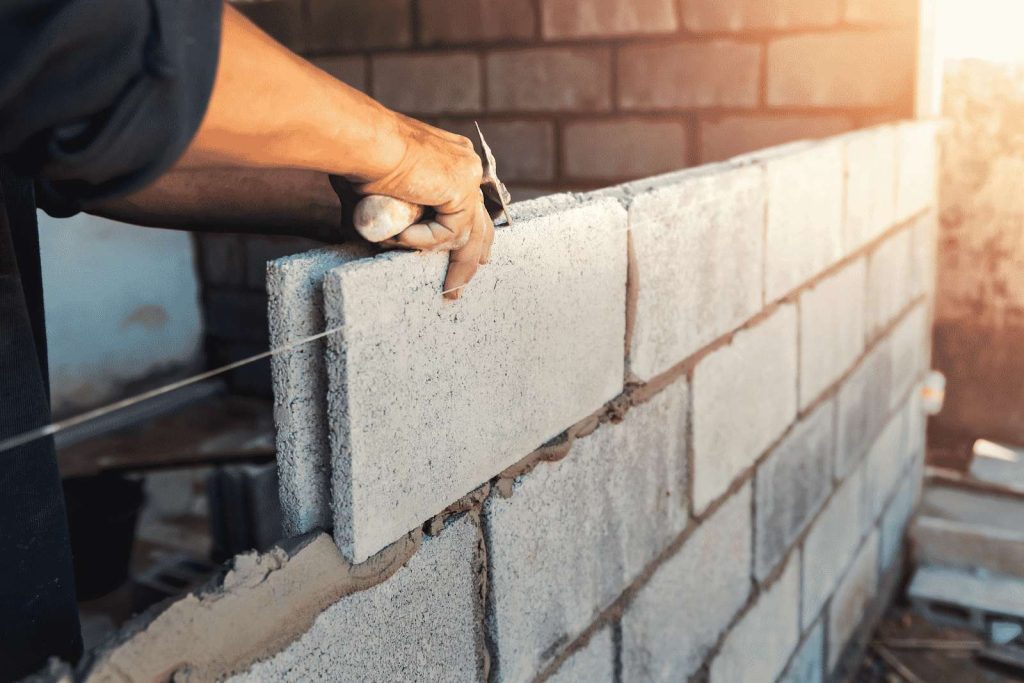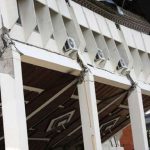Protection Of Masonry During Construction
It is necessary to protect masonry during construction when the mortar is green or when masonry has not been laterally supported, against damage due to rain, frost, storm, etc. It is also necessary to protect some vulnerable parts of masonry such as jambs, corners and sills and expose masonry, during construction from damage due to construction activities.
1. PROTECTION AGAINST RAIN
A heavy down-pour of rain falling on freshly laid masonry can leach out cement and lime from the mortar used for laying masonry if mortar has not sufficiently set. In the first instance, masonry work should be suspended if heavy rainfall is expected. When some masonry work has been freshly laid and rain is imminent, masonry should be covered with tarpaulins or water-proof canvas and if these are not readily available, with old gunny bags. It is only the top few courses which need protection. This protection is needed more in case of slow setting lime or cement-lime mortars and less in case of fast setting cement mortars.
2. PROTECTION AGAINST FROST
As a general rule no masonry work in exposed situation should be carried out when ambient, temperature is below 50C, unless special means are adopted to heat masonry, materials and to protect completed work. When there is likelihood of occurrence of frost at night, in the first instance, mortar which is quick setting, that is, mortar containing fair proportion of Portland cement should be used for laying masonry. Where considered necessary, use can be made of accelerators in cement mortar so that mortar sets quickly and develops sufficient strength before occurrence of frost. As a further precaution, day’s work should be protected by covering the freshly laid masonry with tarpaulins, canvas or gunny bags. Use of air-entraining admixtures in cement mortars results in increased resistance to repeated cycles of freezing and thawing.
3. PROTECTION AGAINST STORM
A masonry wall is able to resist lateral forces due to wind pressure only when cross walls have been built or R.C.C. floor/roof bearing on the wall has been laid. A high wall, therefore, is liable to overturn due to wind pressure if a storm happens to occur, before the wall has been braced either by cross walls or by floor/roof slab. It is, therefore, necessary to protect an unbraced wall during construction if there is a likelihood of occurrence of a storm, with the help of adequate number of bully stays, fixed on both sides of the wall.
4. CARE OF EXPOSED MASONRY
In case of masonry which is not to be plastered over and is to have exposed finish, care should be taken that mortar droppings and surface blemishes are removed soon after laying of masonry, that is, before mortar has set. It is very difficult and laborious to clean the surface of exposed masonry once mortar droppings have set and surface has been blemished.
5. PROTECTION FROM DAMAGE DUE TO NORMAL CONSTRUCTION ACTIVITIES
Care should be taken that corners/edges and jambs and sills of openings, etc, are not damaged due to falling of materials, movement of workers, fixing and removal of scaffolding, centring and shuttering, etc. For preventing damage of this nature, it is necessary to issue suitable instructions to workers and to impress upon them the necessity of exercising due care.


